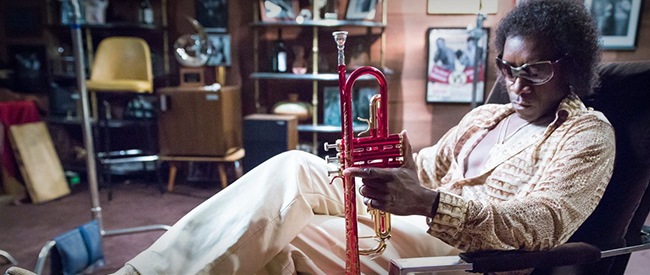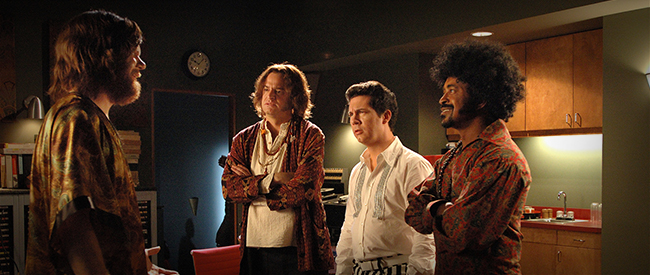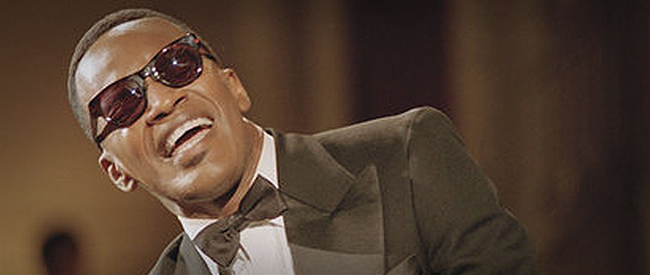Opinion: Why It’s OK That So Many Musician Biopics Are Exactly the Same
From Love & Mercy to Selena to Great Balls of Fire, the musician-biopic is as sturdy and dependable a genre in modern Hollywood as anything not explicitly involving superhero fisticuffs or paranormal-infused YA melodrama.
Last week alone saw the release of not one, not two but three musically-inclined biopics: Miles Ahead, director-star Don Cheadle’s impressionistic exploration of jazz great Miles Davis; I Saw the Light, Marc Abraham’s Tom Hiddleston-starring portrait of late country crooner Hank Williams, Sr.; and Robert Budreau’s Born to Be Blue, featuring Ethan Hawke as yet another troubled trumpeter, Chet Baker.
Taken together, this odd triptych about doomed, deceased and otherwise damaged recording artists has received a wide-ranging cross-section of reviews, from the excitable and effusive to the downcast and damning.

But regardless of each film’s individual quality, ambition or factual veracity, the sheer fact that all three have been released in such close proximity speaks to the popularity and endurance of the musician-biopic as a perennial part of the prestige-movie—and by extension, awards season—ecosystem.
It’s a no-brainer, really. Everyone likes music, and actors like playing musicians. So barring any wild miscalculations (Shane West as Darby Crash, anyone?) musician-biopics are—generally speaking—a pretty safe bet for financiers and distributors.
But whether because of repeat exposure to the formula on movie screens or in the form of endless Behind the Music marathons on VH1 Classic, the Stations of the Rock God Cross—humble origins, overnight superstardom, descent and redemption—are by this point an intrinsic part of our collective movie-watching DNA.
These all-too-predictable rhythms and formulas were made even more explicit by Jake Kasdan’s underrated 2007 satire Walk Hard, which purported to be a satire of music biopics in general but in reality was specifically a parody of Ray and Walk the Line—released, respectively, in 2004 and 2005, and which were all but identical in terms of story beats, tone and visual grammar.

But don’t worry, I’m not here to slag musician-biopics or whine about the genre’s sameness and predictability. The fact is I fucking love these movies. Call it a guilty pleasure, but it’s practically impossible to make a movie about a famous musician that I won’t want to watch, from the grimiest punk parable (Sid & Nancy, Last Days) to the most Mom-friendly doo-wop dramaturge (Jersey Boys, Dreamgirls).
For whatever reason, I find anticipating the music-biopic’s steadfast rhythms and archetypes comforting in much the same way that I enjoy setting my watch to the perfectly-paced intervals at which Jason Voorhees chops up teen camp counselors, or that 007 wriggles free of each supervillain-du-jour’s latest inescapable deathtrap.
I like that so many musician-biopics exist, and that they’re all so similar. And in a weird way, this uniformity actually helps to spotlight what makes each artist unique. Think about it: if you have two identical shoeboxes with either an apple or an orange inside, then the shoebox only serves to emphasize the difference in each item’s texture, color and scale. But devoid of this frame, both are just round fruit.

But releasing three musician-biopics in the same week? Sure—why not! There are certainly more than enough rock stars, country legends, jazz icons and heroes of hip-hop to go around, not to mention plenty of actors in search of meaty roles.
And while the success rate of music biopics may be up for debate, any film designed to celebrate the creative impulse is a net-positive in my book, regardless clunky execution. Now—who wants to reach my Insane Clown Posse spec script?
To learn more about Film Independent, subscribe to our YouTube channel. You can catch up with the rest of our blog here. And to learn how to become of Member of Film Independent, just click here.
